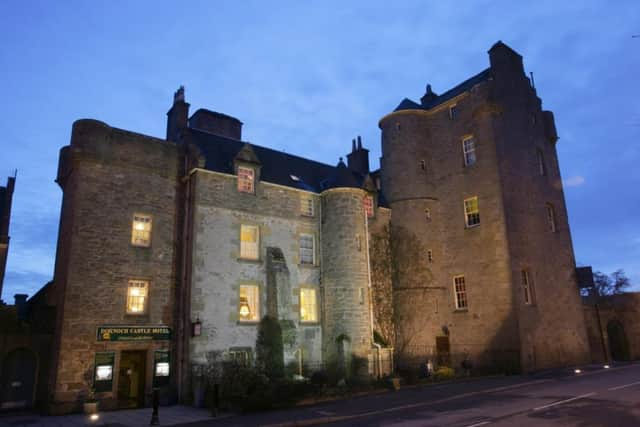Everything you need to know about Scottish venison - from ready meals to defying the seasonal stereotypes
One of the most commonly associated scenes of Highland Scotland is that of the stag – a majestic beast with towering antlers – and is often used as a logo on many Scottish products from whisky to shortbread. But how many of us regularly enjoy the meat that is provided from the animal which has come to represent out country?
Venison comes from four wild deer species found in Scotland: red, roe, fallow and sika. These deer have no natural predators in the wild, so require to be managed due to their impact on land, including damage while grazing and trampling ground, not to mention the number killed on rural roads.
Advertisement
Hide AdAdvertisement
Hide AdTo explain the management of deer more, a spokesperson from Forestry and Land Scotland said: “Deer management is a necessary part of keeping the ecological balance in check for the environment. We believe that deer are an important species and a vital part of Scotland’s biodiversity but they can cause damaging impacts to trees and ground flora at any time of year, if their numbers become too great. Trees have to be protected for the first 6-7 years of their life, from browsing damage by deer. That means some 75 -100 million young trees, representing many millions of pounds worth of investment, have the potential to be damaged by deer– and that’s just on the land that we manage.


“Forestry and Land Scotland is fully committed to supplying the UK food chain with 100 per cent FSC-approved venison products that also meet stringent Chain of Custody regulations. Our deer culls are carried out mostly through our own wildlife management teams and deer management contractors, all of whom have specialist hunting qualifications. We are also committed to supporting the Scottish Wild Venison Assurance Scheme and Scottish venison producers.”
A chef who is passionate about using local venison in his menus is Grant MacNicol, who is head chef at the Dornoch Castle Hotel. MacNicol’s dad was a gamekeeper, so he’s always been keenly aware of the importance of utilising local produce, including meat. He said: “We lived in a very, very rural area on the Badanloch estate close to one of the most remote hotels. As a young lad I was in the kitchen there a lot and we often got snowed in, so we had to use what was around us to make dinner. From a young age, I understood that using the produce and respecting it was very important.”
But now as costs rise and the expectation that food miles will fall, Grant explained that venison holds some of the answers: “Things like lamb, beef – and we’re buying duck from France – are premium items on a menu, and food prices have gone up maybe 30-40 per cent, potentially higher given the current circumstances in the world but venison is local, and much cheaper.”
The traditional thinking around venison is that it’s very seasonal, and you can only use it in season because it’s fresh then. Grant is rallying against this, as he explained that a frozen local product can be as good as buying fresh from abroad. He said: “I’m really trying to fly the flag for game and want people to utliise venison more than just the four months of the year that it’s in season because a venison haunch steak is almost half the price of its beef competitor. It’s important that we look at this as yes, it’s a frozen product, but it’s been freshly frozen and that’s key. I agree with the chef mentality that everything has to be fresh but when we’re importing from other countries, there’s no guarantee that (meat) hasn’t been frozen before. Not to mention the food miles involved with that. With venison, I can fully trace where the deer has been culled and on what estate – and I probably know the gamekeeper - so there’s a much better story there.”


While we’re used to seeing venison in restaurants, Grant does admit that people aren’t sure what to do with it at home, which is something that was raised recently by the Scottish Venison Association (SVA) during the lockdowns. The SVA launched a campaign to get more people to eat venison, as the pandemic saw a decline in demand for the meat. Speaking at the time, Dick Playfair, secretary of the SVA, said: “Venison is a great product - the healthiest of all red meats - and right now there is plenty of it available. The campaign has been designed to encourage those who already eat venison to buy more of it, and for those who don’t yet eat it to try it.”
As well as helping us to cut down on food miles, game is healthier than many red meats and is an excellent alternative to beef. Venison in particular is naturally lean (at 1.6% fat, it is leaner than skinless chicken and has less than half the cholesterol), and is a good source of Omega-3 acids, protein and B vitamins. Better still, it's full of flavour and easy to cook.
Andy Smith and Neil Gilmour from Castle Game are great champions of Scottish game, and advise those that aren’t keen on venison to use venison mince in their usual chilli recipe as this is a quick and easy way of using the meat. They also explained that the flavour of venison changes dramatically when the stags are in rutt, so to try it again if you don’t think you like the taste.
Advertisement
Hide AdAdvertisement
Hide AdFor those keen to eat venison but without the cooking, Great Glen Charcuterie have a range of ready to eat meats, or there’s Strathmore Foods who recently launched the UK’s first venison ready meals - lasagne, chilli, cottage pie, and chausseur – made with meat from Findowie Farm in Perthshire.
Comments
Want to join the conversation? Please or to comment on this article.